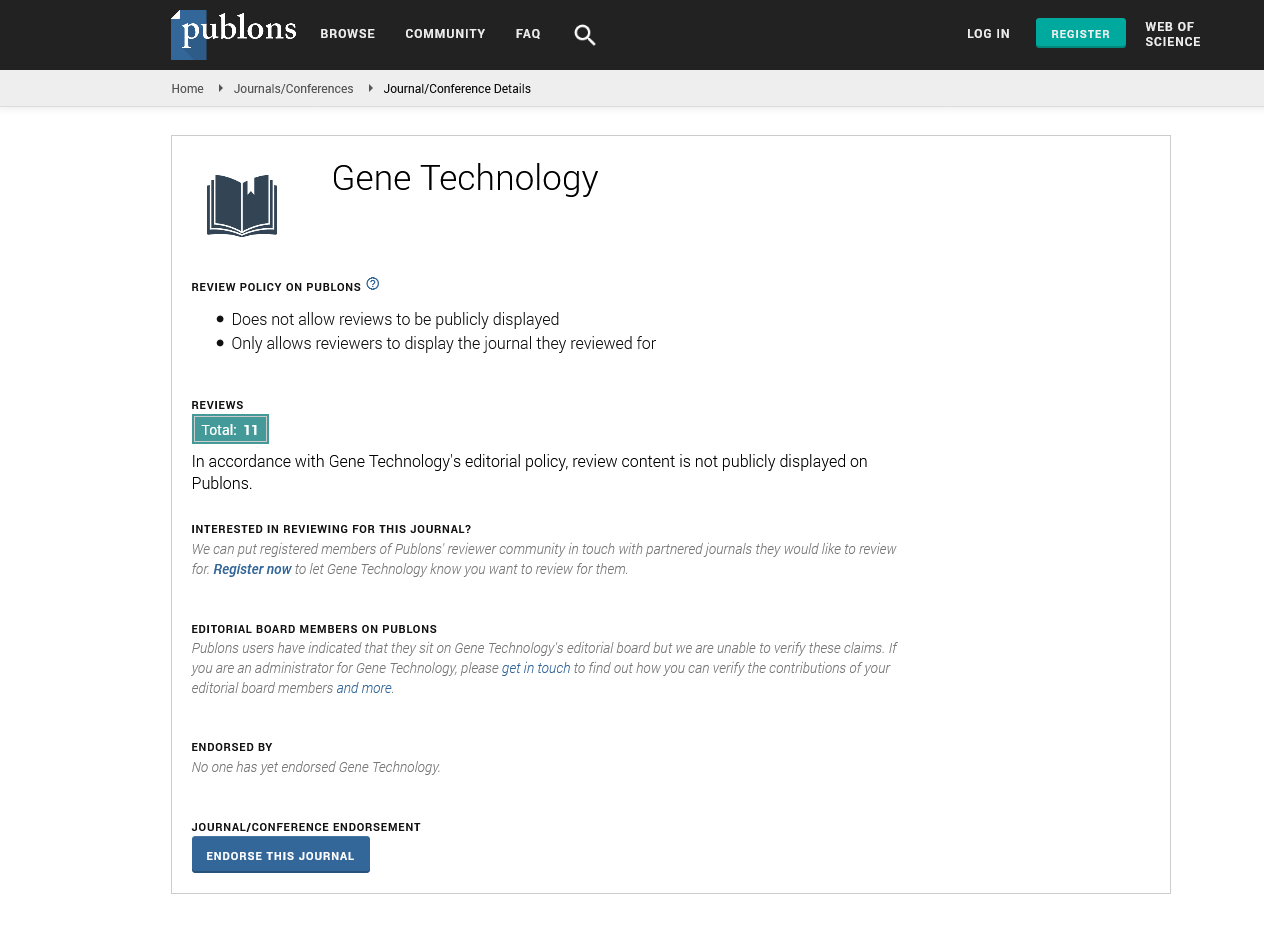Indexed In
- Academic Keys
- ResearchBible
- CiteFactor
- Access to Global Online Research in Agriculture (AGORA)
- RefSeek
- Hamdard University
- EBSCO A-Z
- OCLC- WorldCat
- Publons
- Euro Pub
- Google Scholar
Useful Links
Share This Page
Journal Flyer

Open Access Journals
- Agri and Aquaculture
- Biochemistry
- Bioinformatics & Systems Biology
- Business & Management
- Chemistry
- Clinical Sciences
- Engineering
- Food & Nutrition
- General Science
- Genetics & Molecular Biology
- Immunology & Microbiology
- Medical Sciences
- Neuroscience & Psychology
- Nursing & Health Care
- Pharmaceutical Sciences
Commentary - (2024) Volume 13, Issue 1
Challenges and Strategies in Targeting the EGFR R776L Mutation in Lung Cancer
Fengmin Chen*Received: 01-Mar-2024, Manuscript No. RDT-24-25257; Editor assigned: 04-Mar-2024, Pre QC No. RDT-24-25257 (PQ); Reviewed: 18-Mar-2024, QC No. RDT-24-25257; Revised: 25-Mar-2024, Manuscript No. RDT-24-25257 (R); Published: 01-Apr-2024, DOI: 10.35248/2329-6682.24.13.269
Description
Lung cancer remains a formidable global health challenge, claiming millions of lives annually. While significant progress has been made in understanding and targeting specific mutations that drive the disease, the insensitivity of the oncogenic EGFR R776L mutation to conventional EGFR inhibitors has emerged as a perplexing roadblock. This mutation, identified in Non-Small Cell Lung Cancer (NSCLC) patients, poses a unique challenge in precision medicine. The intricacies of the EGFR R776L mutation, exploring its elusive nature and the current state of therapeutic interventions. Epidermal Growth Factor Receptor (EGFR) mutations are pivotal drivers of lung cancer, especially in non-smokers. Among the myriad EGFR mutations, the R776L mutation has gained attention for its resistance to conventional EGFR Tyrosine Kinase Inhibitors (TKIs), such as erlotinib, gefitinib, and osimertinib. Understanding the genetic landscape of lung cancer for effective treatment strategies. The EGFR R776L mutation is characterized by a substitution of leucine for arginine at position 776 within the EGFR kinase domain. This alteration confers a unique structural change, rendering the mutated receptor less responsive to traditional EGFR inhibitors. Unlike common mutations like exon 19 deletions and L858R, the R776L mutation challenges the established paradigms of targeted therapy.
One of the primary challenges posed by the EGFR R776L mutation is its insensitivity to first and second-generation EGFR TKIs. Patients harboring this mutation often exhibit limited responses to drugs like erlotinib and gefitinib, which have shown remarkable efficacy against other EGFR mutations. The structural alterations induced by the R776L mutation seem to confer a unique resistance mechanism, making the treatment landscape for affected patients considerably challenging. Osimertinib, a third-generation EGFR TKI, has demonstrated efficacy against the common EGFR mutations, including T790M, which confers resistance to first-generation TKIs. However, the effectiveness of osimertinib against the EGFR R776L mutation remains uncertain. Preliminary studies suggest limited success, prompting researchers to explore alternative therapeutic approaches. The resistance posed by the EGFR R776L mutation necessitates in treatment strategies. One avenue of exploration involves combination therapies, wherein traditional EGFR inhibitors are combined with other targeted agents or immunotherapies. The rationale behind this approach lies in the potential synergy of drugs targeting different pathways, thereby circumventing the resistance posed by the R776L mutation.
The emergence of Immune Checkpoint Inhibitors (ICIs) has revolutionized the treatment landscape for various cancers. For EGFR R776L-positive lung cancer, combining EGFR inhibitors with ICIs presents a promising avenue. The rationale is rooted in the potential of immunotherapy to harness the body's immune system to target cancer cells, providing an alternative route when traditional targeted therapies fall short. The complexity of the EGFR R776L mutation highlights the importance of comprehensive genomic profiling in guiding treatment decisions. Identifying this mutation early in the diagnostic process empowers clinicians to therapies based on the specific genetic makeup of the tumor. As technology advances, the integration of genomic information into routine clinical practice becomes increasingly feasible, offering a glimmer of hope for patients with challenging mutations like EGFR R776L. While the field of precision medicine continues to evolve, challenges persist in developing effective therapies for rare and resistant mutations. The heterogeneity of lung cancer further complicates the treatment landscape, emphasizing the need for personalized approaches. Future endeavors should focus on separating the intricate molecular mechanisms behind the EGFR R776L mutation and identifying novel therapeutic targets that can surmount its resistance.
The insensitivity of the EGFR R776L mutation to conventional EGFR inhibitors poses a formidable challenge in the lung cancer treatment. As struggle with this enigma, a multi-faceted approach involving combination therapies, immunotherapy, and precision medicine emerges as a beacon of hope. While the road ahead may be complex, the pursuit of innovative solutions remains imperative to transform the treatment landscape for patients harboring this elusive mutation. The convergence of scientific discovery, clinical innovation, and a commitment to personalized care holds the key to unlocking new limits in the battle against lung cancer.
Citation: Chen F (2024) Challenges and Strategies in Targeting the EGFR R776L Mutation in Lung Cancer. Gene Technol. 13:269.
Copyright: © 2024 Chen F. This is an open-access article distributed under the terms of the Creative Commons Attribution License, which permits unrestricted use, distribution, and reproduction in any medium, provided the original author and source are credited.

